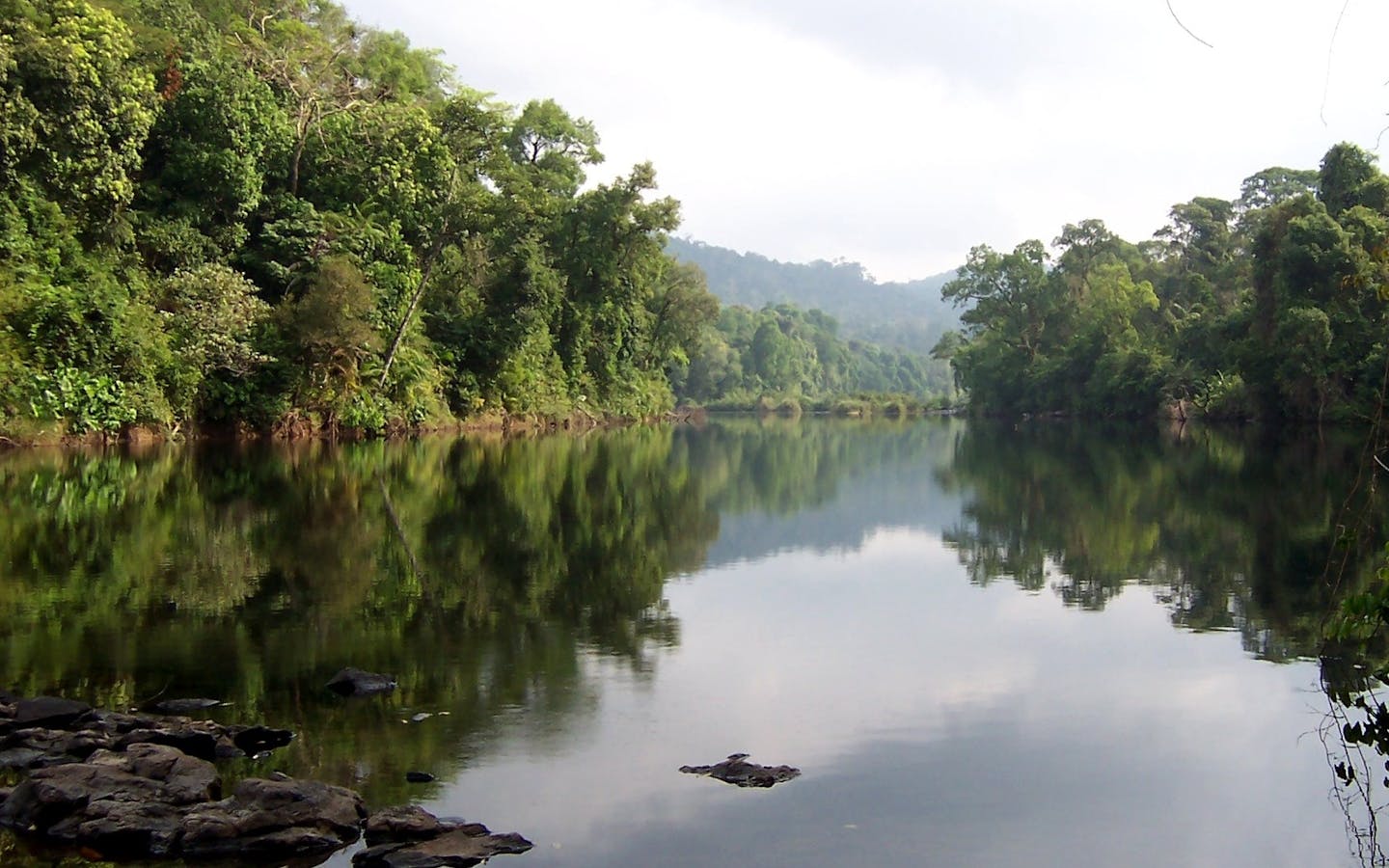With more than 95 percent of its forests intact, the Central Cardamom Mountains Landscape is one of Cambodia’s least deforested areas. It supports nearly 4,000 members of the Chourng and Por Indigenous communities, and provides habitats for more than 500 species, including over 50 threatened wildlife on the International Union for Conservation of Nature (IUCN) Red List — the Asian elephant, clouded leopard, Siamese crocodile, Sunda pangolin and the pileated gibbon along with many species that are unique to this region.

The Central Cardamom Mountains not only store vast amounts of planet-warming carbon, they are also a vital watershed for more than 30,000 people downstream — supporting rice and fish production in the lowland agricultural plains, and feeding into the Tonle Sap Lake, one of the world’s largest inland fisheries.
Due to their isolation, the natural resources of the Cardamom Mountains — estimated to be worth well over US$ 1 billion — have been untapped by outsiders for centuries. But as Cambodia has developed, this region is increasingly vulnerable to illegal logging, hunting, forest clearing and land encroachment.
Our role
Since helping to gain official protection for the Central Cardamom Mountains in 2002, Conservation International has partnered with local communities and Cambodian government to maintain the health of this unique tropical rainforest for the long term.
We are helping the Cambodian government develop legal frameworks to protect this forest and are increasing the government's ability to patrol the area by providing local rangers with the technical and financial support to deter wildlife poaching and illegal logging activities.
We work directly with the communities, including around 4,000 peoples of the Indigenous Chourng and Por tribes, who live in and around the forest, to develop sustainable livelihoods that use the rich natural resources of the Cardamoms — while also managing them for future generations.
Our plan
Reducing deforestation
The Central Cardamom Mountains Landscape has significantly lower deforestation rates than the surrounding forests — but the pressures of illegal logging and wildlife poaching are constant and increasing. Conservation International works with communities, partners and the government to reduce the drivers of climate change and deforestation, and ensure the region continues to be protected.
Blended, and sustainable financing
Funding a protected area forever can be complicated and expensive. Conservation International uses funds from different sources — including the public, private and philanthropic sectors — to deliver long-term integrated conservation that benefits nature and people, and contributes to Cambodia’s green economy.
Science and monitoring
Conservation International’s research has helped stakeholders better understand and quantify the value of nature in the Central Cardamom Mountains Landscape — including to mitigate climate change, provide fresh water and support biodiversity — so it can be factored into government planning. With recent funding from the United States Agency for International Development’s Morodok Baitang initiative we conducted the landscape’s first systematic biodiversity study in 2023 using camera traps. This survey established a long-term biodiversity monitoring program in the area.
Communities for conservation
For more than 20 years, Conservation International has partnered with Indigenous peoples and local communities living in and around the Central Cardamom Mountains Landscape, recognizing their central role in conservation. We have partnered with these communities to support opportunities for sustainable livelihoods, enhance well-being and protect the area’s natural resources. Conservation International takes a rights-based approach to conservation; in this project we focus on helping local communities have a stronger voice in the management of their protected area to ensure that conservation solutions are tailored to their needs and utilise their local knowledge. We have an established accountability and grievance mechanism to ensure that any concerns or issues with conservation efforts, livelihood solutions and enforcement activities are identified quickly and appropriately addressed. In line with this approach, we gain free, prior and informed consent for our work from all local stakeholders on a regular basis.
Safeguarding freshwater
The Cardamom Mountains are a critical source of freshwater that sustains local communities and biodiversity — and provides for more than 30,000 people in the lowlands, supporting agriculture and economic activities, including rice and fish production.
This watershed feeds the Tonle Sap Lake — one of the world’s largest inland fisheries and plays a crucial role in maintaining environmental quality and resilience to climate change in the region. We are focused on sustaining this watershed from the Cardamom Mountains through to the Tonle Sap, where we are restoring flooded forests and improving local livelihoods through sustainable fisheries projects.
By the Numbers
With our support, the Central Cardamom Mountains Landscape program engages more than 14,400 people directly through conservation agreements, which provide economic benefits to local communities in exchange for wildlife protection and monitoring. This has resulted in an increase in the number of community members reporting illegal logging and poaching.
The annual value of the Cardamom Mountains is estimated to be more than US$ 1 billion in terms of the goods and services they provide — including timber, crops, carbon storage, non- timber forest products (such as medicinal plants), water and recreation.
The Central Cardamom Mountains Landscape is home mor than 500 animal species, including over 50 species listed on the IUCN's Red List of Threatened Species — such as Asian elephants, Siamese crocodiles, pileated gibbons, and Sunda pangolins.



